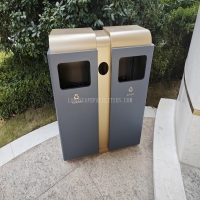Welcome to the website for landscape facilities products and knowledge.
How does the choice of countertop material impact the slip resistance of a landscape bar counter?
The selection of countertop material for an outdoor landscape bar is a critical decision that directly influences both aesthetics and safety, with slip resistance being a paramount concern in environments exposed to moisture, humidity, and frequent condensation. The inherent properties of different materials—their porosity, natural texture, and how they are finished—dictate their performance under wet conditions.
Natural stone options like granite and slate often offer excellent inherent slip resistance due to their naturally rough, crystalline texture. A honed or leathered finish on granite enhances this grip by creating a matte, tactile surface that provides traction even when wet. However, a polished granite finish, while visually striking, can become treacherously slick with just a few drops of water. Similarly, quartz, an engineered stone, is non-porous, meaning it doesn't absorb water, but its surface safety is entirely dependent on the manufacturer's applied texture. A polished quartz slab will be far more slippery than one with a suede or gritty finish specifically designed for outdoor use.
Porcelain slabs are increasingly popular for their durability and low maintenance. Their slip resistance is determined by their surface design; many are manufactured to mimic the texture of natural materials like wood or stone, which can provide good grip. The key is to select a tile with a high Coefficient of Friction (COF) rating, ideally above 0.6 for level, wet surfaces, indicating a reliably non-slip surface.
Sealed concrete presents a unique case. When poured and troweled smoothly, it can be extremely slippery. However, its versatility allows for the incorporation of anti-slip additives into the sealer or the creation of a brushed or lightly etched surface texture during installation to dramatically improve traction. The type and sheen of the sealant are also crucial; a high-gloss sealant will increase slipperiness, while a matte or non-slip additive-enhanced sealant will mitigate it.
Ultimately, the impact of material choice on slip resistance is not absolute; it is heavily modified by the selected finish and ongoing maintenance. A material with great potential, like textured concrete, can be rendered hazardous with an inappropriate glossy sealant. Conversely, a naturally smooth material like polished marble can be treated with after-market anti-slip coatings. Therefore, the choice requires a holistic view of the material's innate properties, the functional finish applied, and a commitment to proper cleaning to prevent the buildup of mold or slick algae, which can compromise even the most textured surface in a damp, outdoor setting.
Related search:

Recommendation
Double-bucket garbage bin, outdoor, metal, multi-color, powder-coated, double-bucket trash can